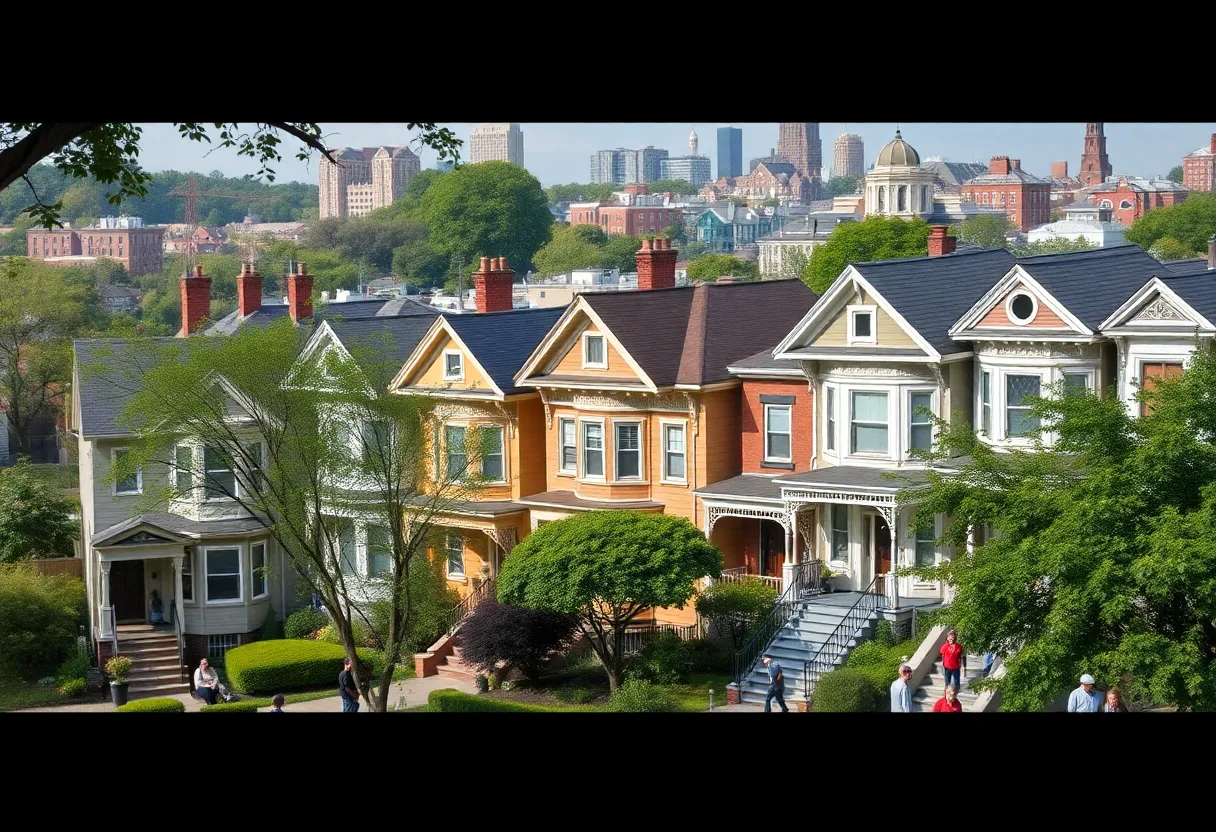How to Successfully Decode Neighborhood Charm: Key Factors Every First-Time Homebuyer Should Consider
Introduction
For first-time homebuyers, understanding the true essence of a neighborhood transcends mere aesthetics. Decoding neighborhood charm involves evaluating multiple interrelated factors that influence daily life, property value, and long-term satisfaction. This guide emphasizes critical considerations to assess when exploring potential communities, ensuring informed decisions that align with personal preferences and financial goals. Mastery of these key elements offers a blueprint for successfully decoding neighborhood charm.
The Importance of Neighborhood Decoding
Neighborhood charm encompasses both visible features and intangible qualities. It impacts lifestyle, safety, growth potential, and community cohesion. For first-time buyers, missing these clues can lead to unforeseen challenges or dissatisfaction. Therefore, a comprehensive analysis is essential, not just to find a beautiful setting but to select a community that aligns with your values and future plans.
Core Factors to Consider When Decoding Neighborhood Charm
1. Location and Accessibility
Proximity to essential services — such as schools, healthcare facilities, grocery stores, and public transportation — significantly influences daily convenience. A well-connected neighborhood facilitates smoother commutes and supports a balanced lifestyle.
Assess transportation options, traffic patterns, and potential future infrastructure projects. Accessibility not only affects quality of life but also property value stability.
2. Community Demographics and Social Cohesion
Understanding who lives in the area offers insight into the neighborhood’s social fabric. Demographic profiles, such as age groups, family structures, and cultural backgrounds, shape community interactions and shared values.
Look for signs of active neighborhood associations, community events, and social initiatives. These indicators suggest a vibrant, inclusive community that fosters a sense of belonging and safety.
3. Safety and Crime Rates
Safety is non-negotiable when choosing a neighborhood. Review local crime statistics and incidence reports thoroughly. A neighborhood with consistently low crime rates offers peace of mind and enhances property values.
Visit at different times, talk to residents, and observe neighborhood activity for a more comprehensive safety assessment.
4. School Quality and Educational Opportunities
For buyers with children or intending to establish long-term roots, nearby school quality is paramount. High-performing schools not only benefit students but also boost real estate appeal and value.
Investigate school rankings, extracurricular offerings, and community involvement to gauge the educational atmosphere within the neighborhood.
5. Local Amenities and Infrastructure
Evaluate the availability of amenities such as parks, recreational facilities, shopping centers, and dining options. Additionally, consider public infrastructure including roads, sewage systems, and internet connectivity. These factors contribute to quality of life and property appeal.
6. Economic and Development Trends
Understanding the economic health of a neighborhood informs its growth outlook. Areas with active development projects, commercial investments, and job opportunities tend to appreciate faster and sustain community vitality.
Watch for signs of revitalization, new businesses, and infrastructural improvements that signal ongoing growth potential.
7. Environmental Quality and Natural Features
Research environmental considerations such as air and water quality, flood risk, and green space. Proximity to parks and natural reserves enhances living experience and supports physical and mental well-being.
Assessing Environmental Risks
Consult elevation data, flood zone maps, and environmental reports. Areas prone to natural disasters may require additional mitigation measures, affecting insurance and maintenance costs.
Practical Approaches to Decoding Neighborhood Charm
1. In-Person Observation and Walkthroughs
Physical visits are invaluable. Walk around at different times of day to observe activity levels, noise, and cleanliness. Engage with residents to glean authentic insights beyond promotional materials.
Note the upkeep of properties, signage, and public spaces, which often reflect community pride and stability.
2. Data and Market Trends Analysis
Utilize real estate data to analyze property price trends, turnover rates, and resale values. Rapidly appreciating neighborhoods may offer investment advantages, though be mindful of potential bubbles.
Compare data across similar neighborhoods to contextualize findings and identify areas with sustainable growth prospects.
3. Local Governance and Zoning Policies
Review local ordinances, future zoning plans, and community regulations. Restrictions and development policies directly impact neighborhood evolution and your ability to customize or expand your property.
4. Long-Term Community Development Plans
Investigate municipal plans for infrastructure improvements, public safety enhancements, and community services expansion. Proactive planning fosters neighborhood resilience and appreciation.
Evaluating Personal Compatibility with Neighborhoods
Decoding neighborhood charm is also about aligning the community with your personal preferences. Reflect on factors such as lifestyle fit, preferences for urban versus suburban settings, noise levels, and social environment.
Prioritizing these personal considerations ensures the neighborhood’s charm resonates with your daily life.
Conclusion
Successfully decoding neighborhood charm is a systematic process rooted in rigorous evaluation of tangible and intangible factors. Focus on location, safety, community dynamics, amenities, and environmental qualities. Conduct thorough in-person assessments and utilize reliable data sources to inform your decision. Remember, the ideal neighborhood aligns with your values, lifestyle, and long-term investment goals.
By applying a balanced, informed approach, first-time homebuyers can confidently select neighborhoods that offer both initial beauty and enduring value.
Author: STAFF HERE NEW YORK WRITER
The NEW YORK STAFF WRITER represents the experienced team at HERENewYork.com, your go-to source for actionable local news and information in New York, the five boroughs, and beyond. Specializing in "news you can use," we cover essential topics like product reviews for personal and business needs, local business directories, politics, real estate trends, neighborhood insights, and state news affecting the area—with deep expertise drawn from years of dedicated reporting and strong community input, including local press releases and business updates. We deliver top reporting on high-value events such as New York Fashion Week, Macy's Thanksgiving Day Parade, and Tribeca Film Festival. Our coverage extends to key organizations like the Greater New York Chamber of Commerce and United Way of New York, plus leading businesses in finance and media that power the local economy such as JPMorgan Chase, Goldman Sachs, and Bloomberg. As part of the broader HERE network, including HEREBuffalo.com, we provide comprehensive, credible insights into New York's dynamic landscape.





